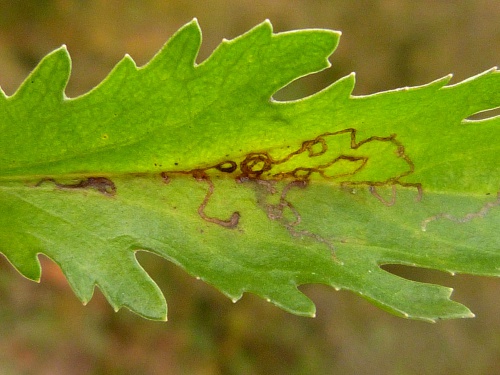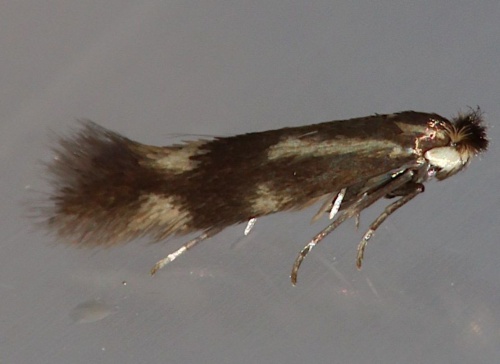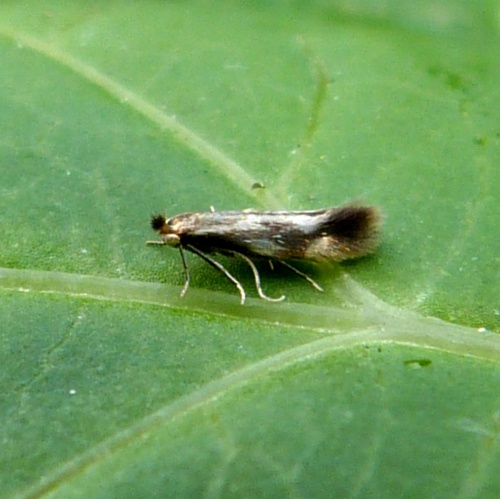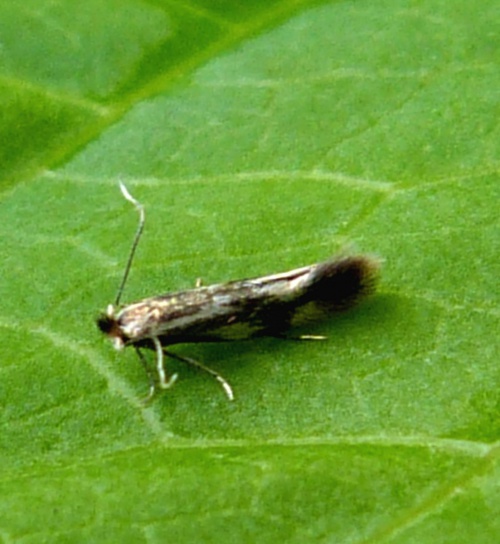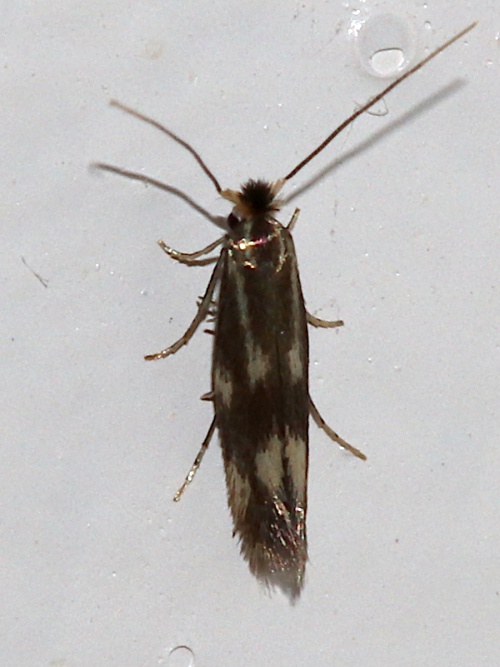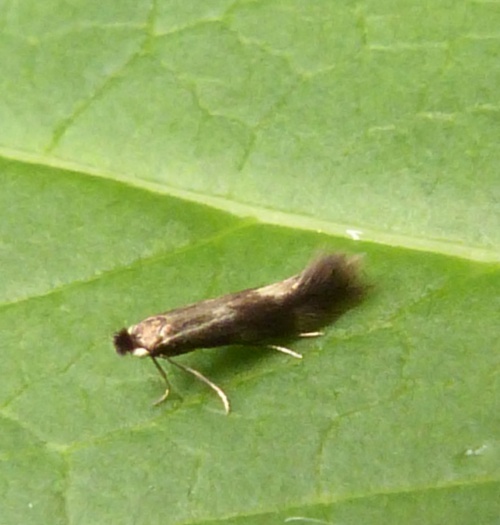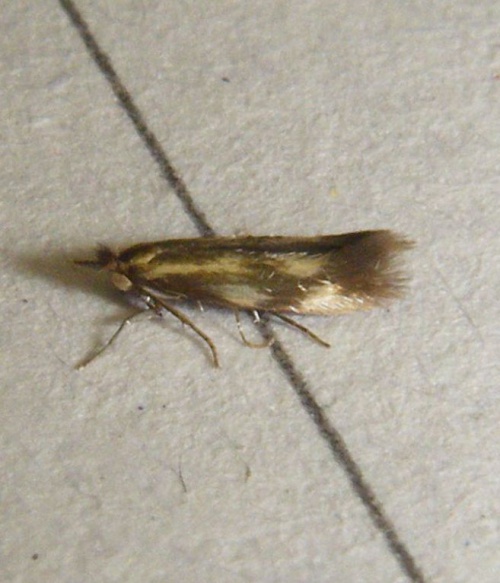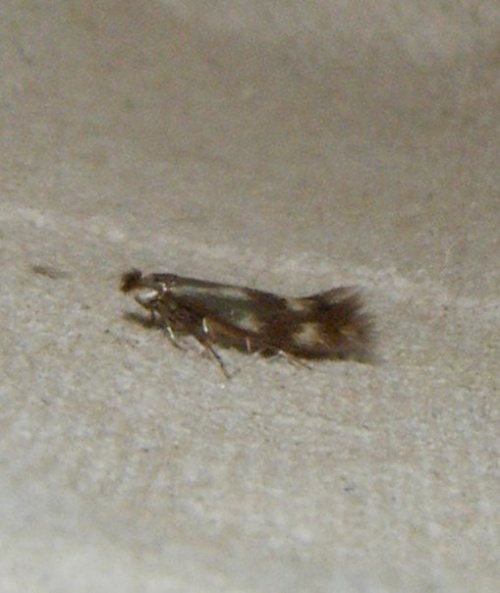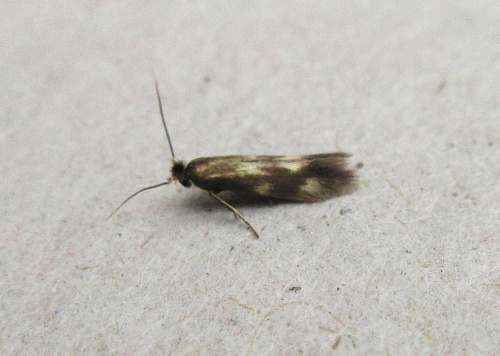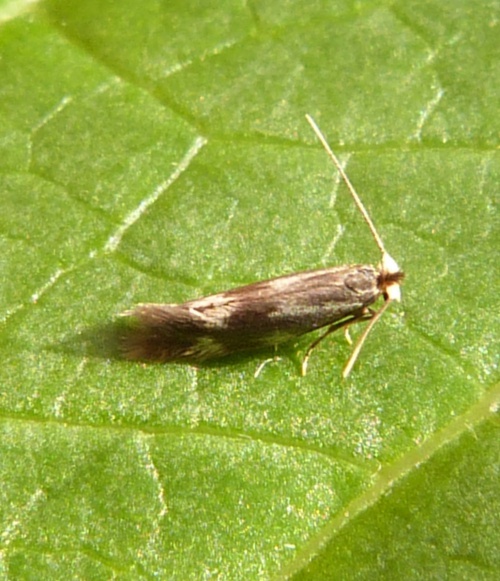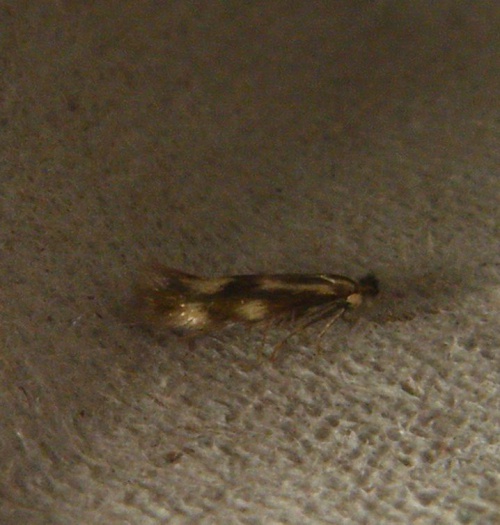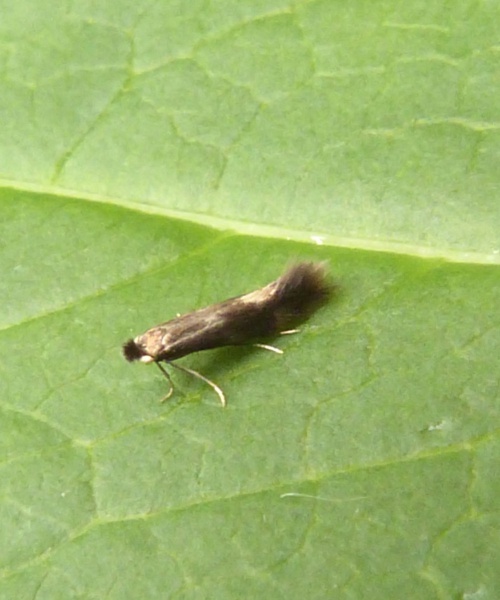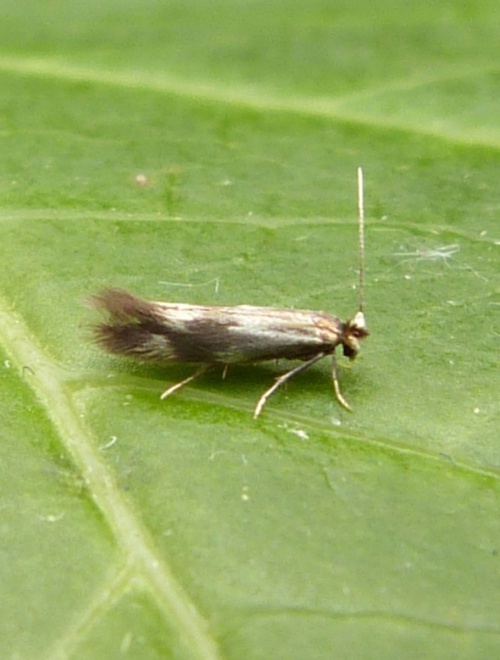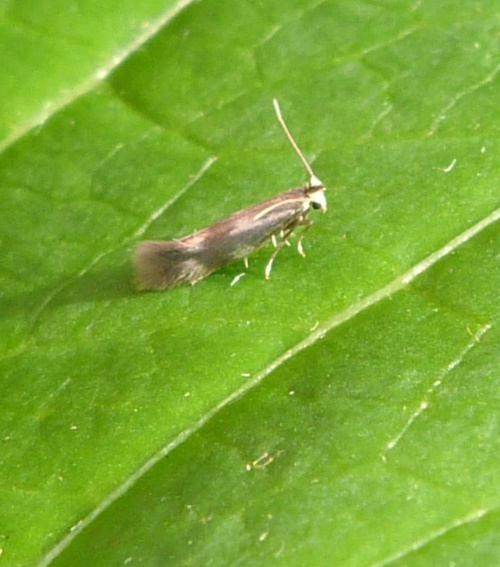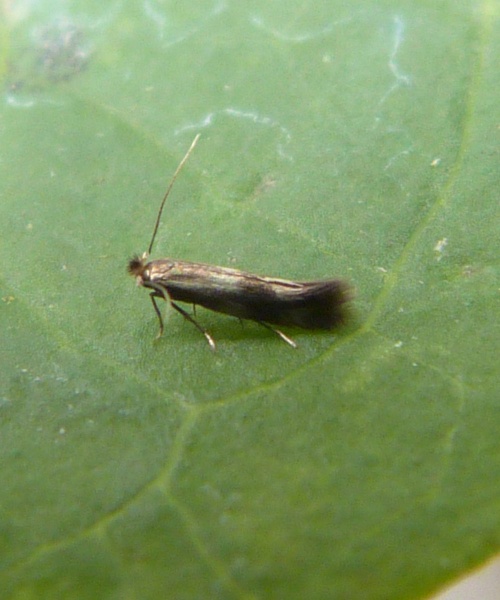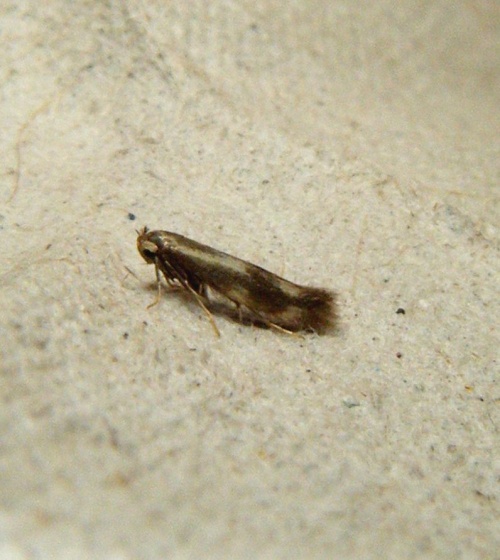Bucculatrix nigricomella
Daisy Bent-wing
Wingspan 7 to 8 mm. A small, but fairly distinctive member of the Bucculatrix genus, with its general dark colouration with diffuse paler markings, and noticeable whitish eye-caps.
Where Oxeye Daisy is present.
The adults have two generations, flying in April and May and again in late July and August.
The larvae mine the leaves of Oxeye Daisy creating a long, meandering gallery containing narrow blackish frass. In later instars, the larva feeds externally.
It is widely distributed over much of the British Isles, though absent in some places. In the Butterfly Conservation's Microlepidoptera Report 2011 this species was classified as local.
It appears to be uncommon in Leicestershire and Rutland, where there are few records. L&R Moth Group status = D (rare or rarely recorded).
Leicestershire & Rutland Map
Enter a town or village to see local records
MAP KEY:
Yellow squares = NBN records (all known data)
Coloured circles = NatureSpot records: 2020+ | 2015-2019 | pre-2015
UK Map
Species profile
- Common names
- Daisy Bent-wing
- Species group:
- Moths
- Kingdom:
- Animalia
- Order:
- Lepidoptera
- Family:
- Bucculatricidae
- Records on NatureSpot:
- 29
- First record:
- 14/07/2003 (Skevington, Mark)
- Last record:
- 10/09/2023 (Higgott, Mike)
Total records by month
% of records within its species group
10km squares with records
The latest images and records displayed below include those awaiting verification checks so we cannot guarantee that every identification is correct. Once accepted, the record displays a green tick.
In the Latest Records section, click on the header to sort A-Z, and again to sort Z-A. Use the header boxes to filter the list.


